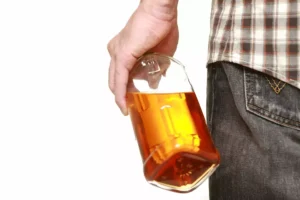
It should not be used in place of the advice of your physician or other qualified healthcare providers. Almost 27% of intermediate familial alcohol dependents have sought help for their drinking problem. They tend to prefer self-help groups, detoxification programs, specialty treatment programs and individual private health care providers. Only 17% of functional alcoholics have ever sought help for their alcohol dependence. Those who do tend to make use of 12-step programs and private health care professionals.
Subtypes of Alcoholics
Examples may include anxiety, bipolar disorder, and obsessive-compulsive disorder (OCD). Intermediate familial alcoholics are about 38 years old and started drinking around the age of 17. While moderate drinking may not necessarily lead to addiction, it’s important to note that individuals with a family history of alcoholism or other risk factors may be more susceptible to developing the disease. Additionally, even individuals who engage in moderate drinking should be aware of their limits and avoid binge drinking or excessive consumption. It’s important to note that genetics alone do not determine whether someone will become an alcoholic. The intermediate familial alcoholic is a complex and challenging condition that requires specialized treatment.

Get Professional Help
Almost 66% of chronic severe alcoholics have sought help for their alcoholism. They have the highest rates of attendance at self-help groups, detoxification programs and specialized rehabilitation programs, and the highest rates of treatment in inpatient programs. When seeking treatment, they tend to turn to social workers, psychologists, psychiatrists and private physicians. This is the rarest and most dangerous type of alcoholism, making up 9.2% of alcoholics. They begin drinking around age 16 and develop alcohol dependence later, around 29 years of age.
What Are the Types of Treatment for AUD?
- Two-thirds of this subtype have sought help for their alcoholism at some point, making them by far the most likely to have done so.
- Those who do tend to make use of 12-step programs and private health care professionals.
- Alcohol is often implicated in exacerbating aggression, and the National Council on Alcoholism and Drug Dependence (NCADD) publishes that 40 percent of all violent crimes cite alcohol as a contributing factor.
- Many people who fall into the young antisocial alcoholic subtype suffer from other mental health disorders as well, such as bipolar disorder, anxiety disorders, or depression.
- The basal ganglia have become reliant on alcohol for activation; without it, a person may feel anxious and irritable.
- Signs and symptoms of chronic alcoholism may include sweating, rapid heartbeat, hand tremors, problems sleeping, nausea and vomiting, hallucinations, restlessness and agitation, anxiety, and occasionally seizures.
These individuals generally start drinking at the age of 17 and develop alcohol dependence as early as the age of 32. This category is highly likely to have antisocial personality disorders, depression, generalized anxiety disorders, bipolar disorders, and a family history of alcoholism. They also suffer from high rates of cigarette, cocaine, and marijuana addiction. The chronic severe subtype makes up the smallest percentage of alcoholics, with only 9.2%.
How do the 5 Types of Alcoholics Differ in Terms of Their Drinking Patterns and Behaviors?
Highly trained professionals can guide families and loved ones into a treatment program that will be optimal for enhancing a sustained recovery. To understand this complex and unique disorder, it’s essential to learn the different types of alcoholics. More than a quarter have sought help for their drinking at some point through self-help groups, treatment programs, alcohol detox programs and health care providers.
The Five Types of Alcoholism Table of Contents
Different types may require tailored interventions based on their specific needs, characteristics, and underlying factors. Treatment may involve a combination of medical interventions, counseling, support groups, behavioral therapies, and addressing co-occurring disorders. If you or someone you know is struggling with alcohol addiction, it’s important to seek help as soon as possible. Young antisocial alcoholics are often resistant to treatment, but with the right interventions, recovery is possible. Cognitive-behavioral therapy can be particularly effective in addressing the underlying issues that contribute to heavy drinking and antisocial behavior.

Functional Subtype
- Co-occurring mental health conditions, including depression, anxiety and bipolar disorder, are also common.
- Treatment for alcohol use disorder generally consists of medication, therapy, and support.
- Even if your loved one is not ready to get help for AUD, you can still support them by suggesting alcohol-free activities when you spend time together.
The National Council on Alcoholism and Drug Dependence (NCADD) is a great resource to learn more about alcoholism and find a treatment center near you. Rather, it is a gradual process that typically begins with occasional social drinking and progresses to regular heavy drinking. Over time, the individual may find themselves unable to control their drinking and may prioritize alcohol over other aspects of their life. Young antisocial alcoholics have a high rate of psychiatric disorders and other substance abuse. A study by scientists at the NIAAA, part of the National Institutes of Health (NIH), analyzed 1,484 survey respondents who met specific diagnostic criteria for alcohol addiction. The name chosen for this group seems odd but was selected because the majority of its members are middle-aged and come from families with a history of alcoholism.
- A delta alcoholic may also have a high tolerance and need to drink more to feel the effects.
- This dependence can lead to a host of health problems, including liver disease, pancreatitis, and even cancer.
- This subgroup is very likely to have had immediate family members with alcoholism.
- Therapy and support groups are effective treatment options for those struggling with alcoholism.
- By definition, an alcoholic is an individual who consumes alcohol to a dangerous level, above the government’s recommended 14 units a week, and who may be struggling in other areas of their lives as a result of this.
Understanding Alcohol Use Disorder
They are more likely to try dual diagnosis programs that address their substance abuse and mental health conditions. The five alcoholic subtypes—young adult, young antisocial, functional, intermediate familial, and chronic severe—require different approaches 5 types of alcoholics to AUD treatment. These individuals are the most-educated and well-off out of all categories, and half of them are most likely to be married. Although these alcoholics appear to be functional, they still suffer from an addiction to alcohol.

When someone struggles with an alcohol use disorder, they feel an overwhelming compulsion to drink alcohol. Over 15 million Americans struggle with this disease, and that’s only those over the age of 18. Researchers found that they have the highest rates of employment among alcoholics, with 68% working full-time and an average family income of nearly $50,000 a year. Only 8.7% of young adult alcohol dependents have ever sought treatment for their drinking problem.
Tinggalkan Balasan